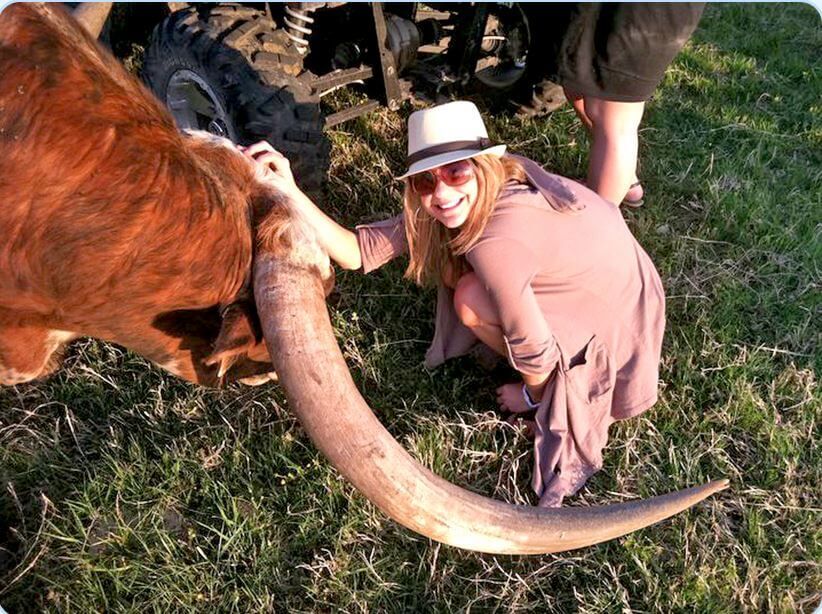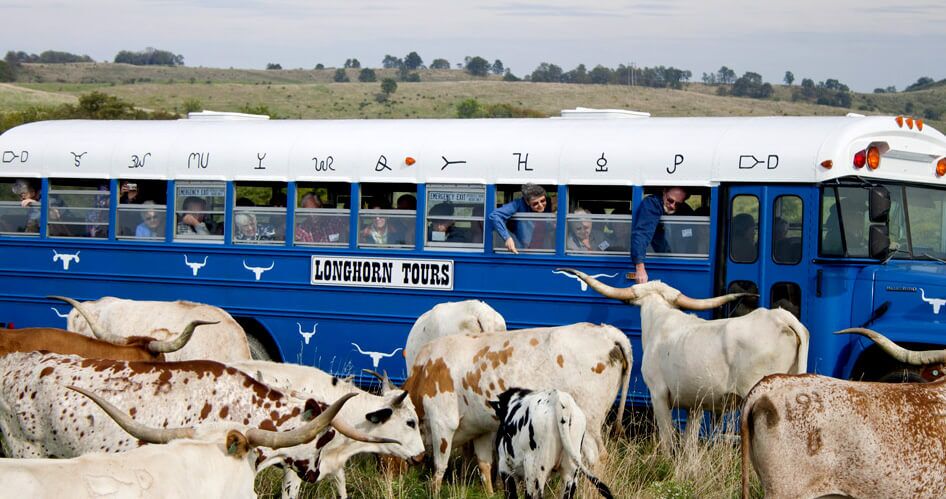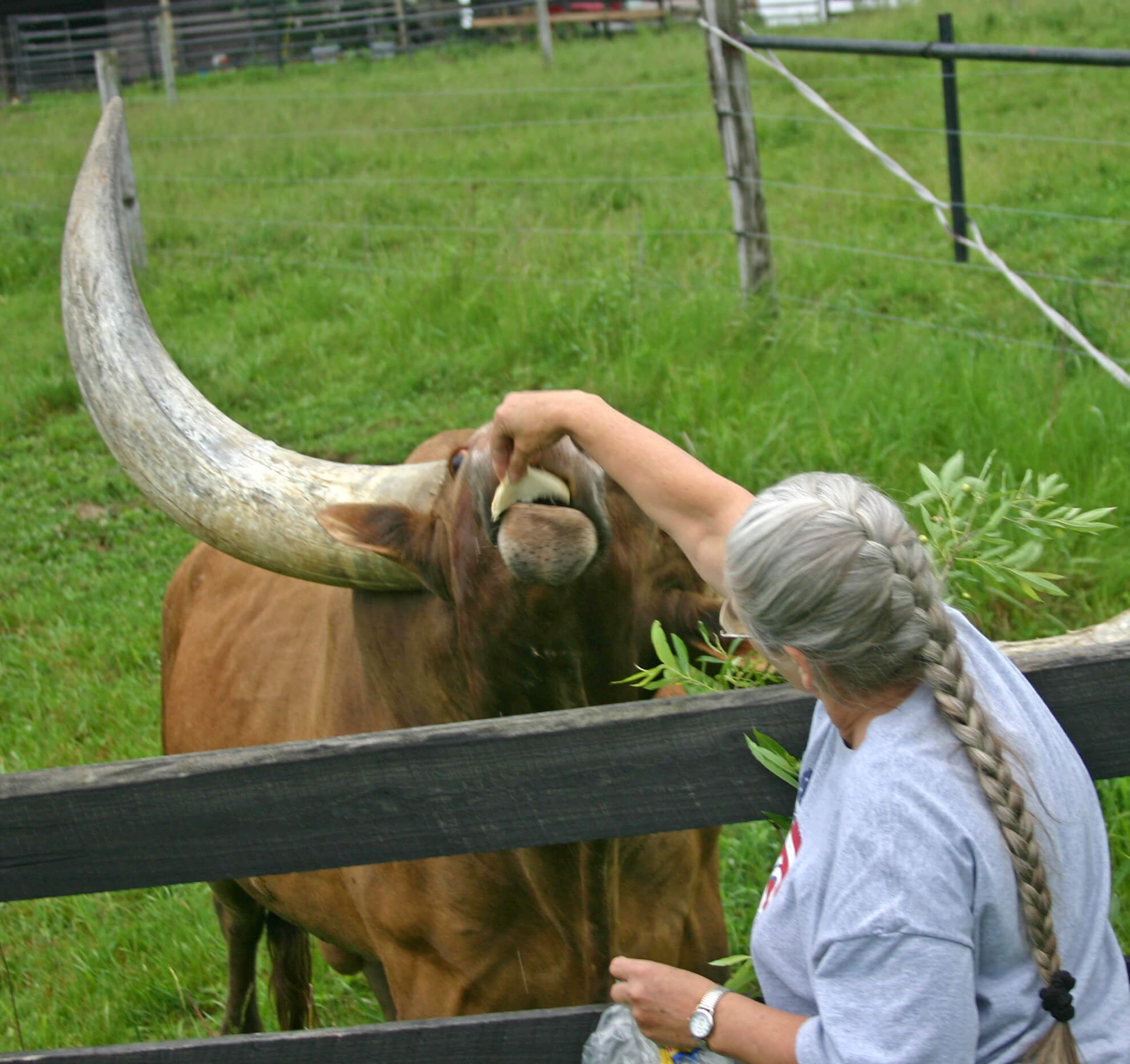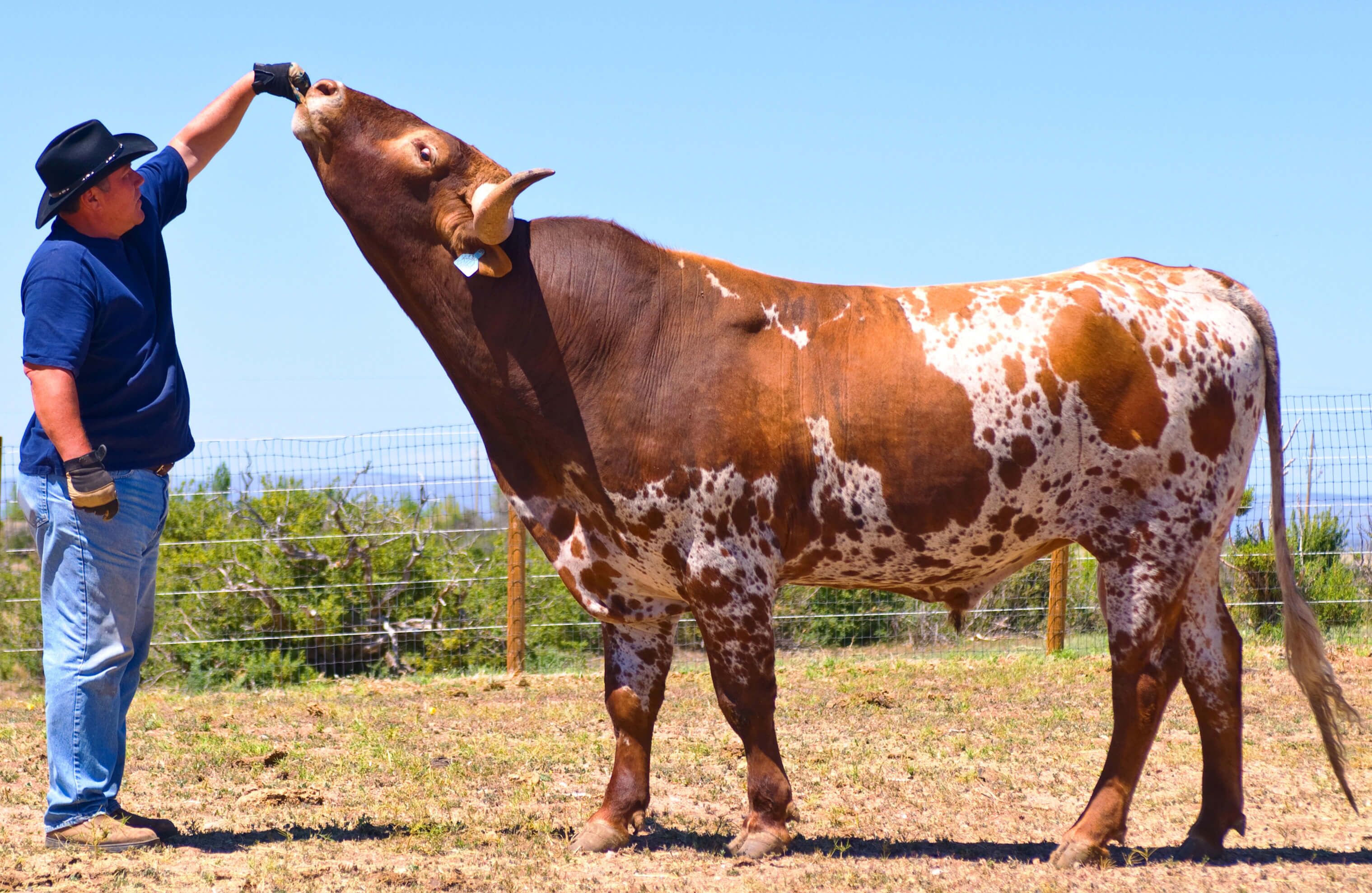TLH - Newsletter (englisch)
Used courtesy of Dickinson Cattle Co. USA

Longhorns, Love & Liability
Erstellt am: von Longhorn
DCC Ranch e-News #299 - 1-20-2
by Darol Dickinson
Longhorn owners often express their immense love and affection enjoyed when raising and interacting with their matchless Texas Longhorn cattle. While no one openly disagrees with those who strongly love their cattle, there are some good ways to love cattle but also some bad, wrong ways. It impresses city people to hand feed, pet, touch and scratch a massive horned critter. It even impresses people to see one far off in the distance. This breed is impressive to view, discuss or touch. The closer you communicate, the more attached people and cattle become.
Seldom do people who work with cattle on a regular basis become injured. There is a certain carefulness due to the size and strength of the beast that receives valid acknowledgment. This is why squeeze chutes are used to give shots and apply hot iron brands. Everyone understands that cattle won’t hold still for these necessary things, gentle pets or not.
During the Summer we do Texas Longhorn pasture tours and haul green-as-grass city people around the pastures allowing them to hand feed the cattle. They are thrilled by the special feeling of a slick-slimy cow tongue wrapping around their fingers and sucking-up the cattle candy pellets. They pay to do it. However, the process has to be done a very special way, totally safe and under a completely controlled plan. Non-cattle people can safely feed cow candy out a bus window that is located high above the horn level. For safe entertainment, keeping people at a planned distance and yet close enough to touch the cattle is the goal.
Scratching and petting: There is something about scratching a Texas Longhorn right on top of the head that is enjoyed by the critter and the person. Cattle enjoy it once they are bonded with confidence to their scratcher. Of all things so easy to start doing, this is not a good thing to do. It causes the animals to lower their heads, due to the enjoyment, and they want more scratching therefore press forward. It is simple on a baby calf, but not so good when the calf becomes a ton bull. This position causes the horns to tilt forward toward a person. One horse fly drilling a critter’s flank with a head-swing to swat a fly, can be an unwanted shish kabab. It is a good rule to only pet, brush or scratch Texas Longhorn's heads when they are restrained.

To enjoy a hands-on Texas Longhorn experience there are several ways to do it. Cattle equally like to be scratched under the neck. With some patient training the main herd sire will raise his head in the air to be scratched under the neck. This raised position causes the horns to angle away from a person's face to a safer direction.
Scratching from the shoulders back is a safe scratch-zone of a loose animal. Some friendly critters will move sideways to get a firmer scratch, yet the horns are in a safe distant area. Cows like to be scratched between the hind legs above the udder. After getting addicted to the “rear scratch” technique they will often raise their tail making a clear signal that “all is well.”
Encourage friends to never pet or scratch a critter in front of the shoulders unless the animal is haltered, or else scratch under the neck with the nose pointed in the air. That is always a safe plan.
False Assumptions: Show cattle that are handled several hours a day often get so gentle children love on them and brush them over, under and on every side. Just because many very well trained show heifers are completely safe this can cause people to assume every show calf or herd sire is the same way. However, like people, every personality is different. One feather don't make a duck.

Education: Cattle learn from multiple experiences. The more often they are loaded in a trailer, taken to shows, stand tied, hand fed or even driven around corral chute systems, they learn. The first time a calf is pushed into a squeeze chute it may be very scary to him. If a calf is driven through a wide open chute a few times the chute fear goes away. As with all learning experiences these things take time and a patient person to do the training. With repetitive educational experiences cattle can be trained to ride with saddle, lead with a loose rope, come when called or savor a friendly back scratch.
The fastest way to work cattle is slow. Move slow and be quiet.
Addicting things: Cattle have a wide range of tastes. They can become addicted to simple small feed treats. Cattle candy, a compressed 7/8” pellet with a mix of grains, molasses or alfalfa powder is a favorite. Use a plastic container strapped on a four-wheeler filled with pellets to quickly train the herd when you enter the pasture. Rattle the pellets. Just a few pellets will train the whole herd to become real pals. Train them to be addicts.
Old bread, sweet rolls, candy, carrots and sugar lumps will create great bonding. Once cattle are hand fed treats like turnips, sweet potatoes, and apples you have their undivided attention.
During the 2011 Texas drought one farmer fed newspapers to his cows. On a windy day cows were seen chasing after papers like a dog with a Frisbee. A bottle calf can be switched from milk to drinking soft drinks from a can. That is a fun thing.

Liability: There is a well-worn law whereby a property owner is responsible for the safety of guests, or even non-invited people. A duty to warn is a concept that arises in the law of torts in a number of circumstances, indicating that a person will be held liable for injuries caused to another, where the person had the opportunity to warn the other of a hazard and failed to do so.
Most notably, a property owner has a duty to warn persons on the property of various hazards, depending on the status of the person on the property. For example, the property owner must warn a trespasser of harmful conditions known to the owner which might possibly be unnoticed by the trespasser. The ranch or cattle owner should warn people of all known hazards and must warn of all dangers that the property owner can discover through a reasonable inspection of the property. (That property could be cattle at a show.)

There may have never been a case where a Texas Longhorn swung his head around and whacked someone, or jumped forward when another critter poked him on the rear. However, keep these things in mind:
- Work with cattle so they are easily managed if in public.
- Each owner is responsible for his cattles’ conduct, if it is not good or good.
- Don’t falsely assume your cattle will act good around people any more than your children.
- Hand feed from a high hand position rather than leaning down to the cow’s mouth.
When it comes to liability, no matter how much you love your cattle, it is one thing to get kicked by your own pet show cow and another thing for your cow to kick your ex-wife’s mother.
Pleasant memories are planned in advance, as in hand feeding of this special breed of cattle.
Thanks to Nicole Lenz, Rex Mosser, Jim Hix,
and Brad Troy for use of photos.
Dickinson Cattle Co., Inc.; 35000 Muskrat Rd.; Barnesville, OH 43713; 740 758-5050
